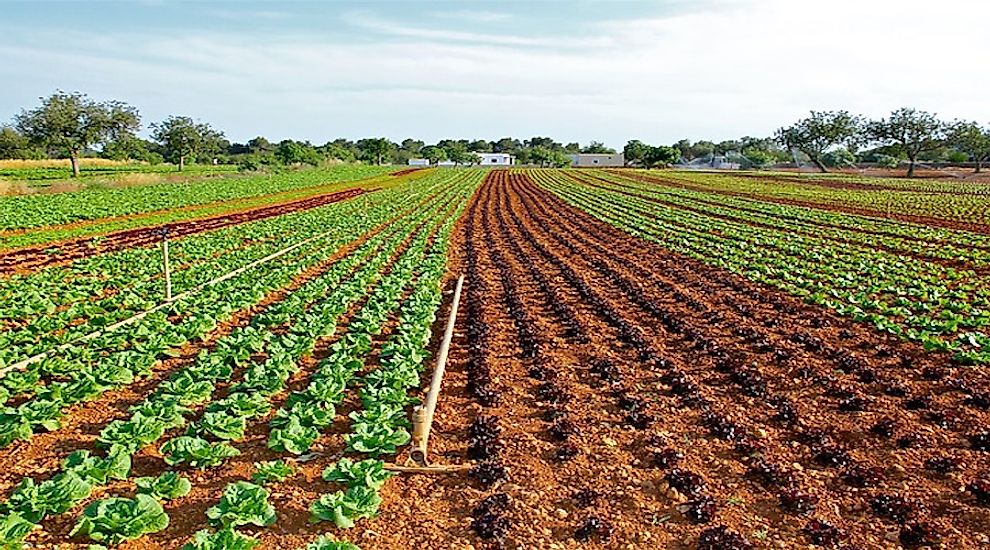World Leaders In Lettuce Production

Lettuce (Lactuca sativa), an annual plant, belongs to the family Asteraceae. The plant is usually cultivated as a leaf vegetable in different parts of the world. Lettuce leaves are widely used in salads, sandwiches, wraps, and similar food items. The plant was first cultivated by ancient Egyptians from where it spread to Greece and Rome and was soon cultivated in most parts of Europe. The European settlers introduced the crops to other parts of the world.
Cultivation Of Lettuce
The lettuce plant is a hardy annual that grows best in nitrogen-rich, loose soils that have a pH ranging between 6.0 and 6.8. Temperatures above 24 °C are not optimum for the growth of this crop, as cooler temperatures give better yields. Optimum growth temperature for lettuce is 16 to 18 °C and the plant can tolerate temperatures as low as 7 °C. The harvested lettuce is best stored at 0 °C and a humidity of 96%. The plant is difficult to store as it has a high water content and thus it is best eaten fresh. Lettuce seeds are best stored at −20 °C or under cryogenic conditions. Several types of lettuce are grown but the three most common types are romaine, leaf, and head lettuce.
Production Of Lettuce
In 2013, 24.9 million tons of lettuce were produced in the world. China alone produced about 13.5 million tons. However, in China, a majority of the lettuce produced is utilized for domestic consumption. Spain and then the US are the two largest exporters of lettuce in the world. Originally, the countries of North America and Western Europe ranked the highest in lettuce production in the world. The scenario changed since the late 1900’s when the crop began to be cultivated in large-scale in other parts of the world. Different varieties of lettuce are cultivated in different parts of the world. Stem lettuce is more common in Egypt and China while butterhead was preferred in Northern Europe. Romaine is more popular in the Mediterranean countries. Currently, the crisphead variety is more dominant in northern and western Europe. In the US, several varieties of lettuce are grown. California (71%) and Arizona (29%) account for the entire lettuce production in the US.
Uses Of Lettuce
Lettuce is an excellent source of vitamin K, vitamin A, folate, and iron. The use of lettuce in cuisines has been prevalent since the ancient times. The ancient Romans consumed lettuce leaves cooked and served with a dressing of vinegar and oil as far back as 50 AD. The serving of lettuce salads started in about 81–96 AD. Today, lettuce leaves are mainly consumed while one type is cultivated for seeds to prepare and oil and another type is cultivated for its stem. Lettuce leaves are widely used in salads, soups, wraps, sandwiches. Lettuce is also used in cooked dishes in different parts of the world.
Lettuce parts have also been used in the preparation of traditional and herbal medicines in some places. Ancient Egyptians would relate lettuce to sexual prowess. Similarly, ancient Romans also claimed that lettuce consumption increases sexual potency. The initial settlers in South America considered lettuce to be a cure for small pox. Several other medicinal and religious lores are also associated with lettuce consumption.
World Leaders In Lettuce Production
| Rank | Country | Production,2013 (in millions of tonnes) |
|---|---|---|
| 1 | China | 13.5 |
| 2 | United States | 3.6 |
| 3 | India | 1.1 |
| 4 | Spain | 0.9 |
| 5 | Italy | 0.8 |
| 6 | World | 24.9 |











